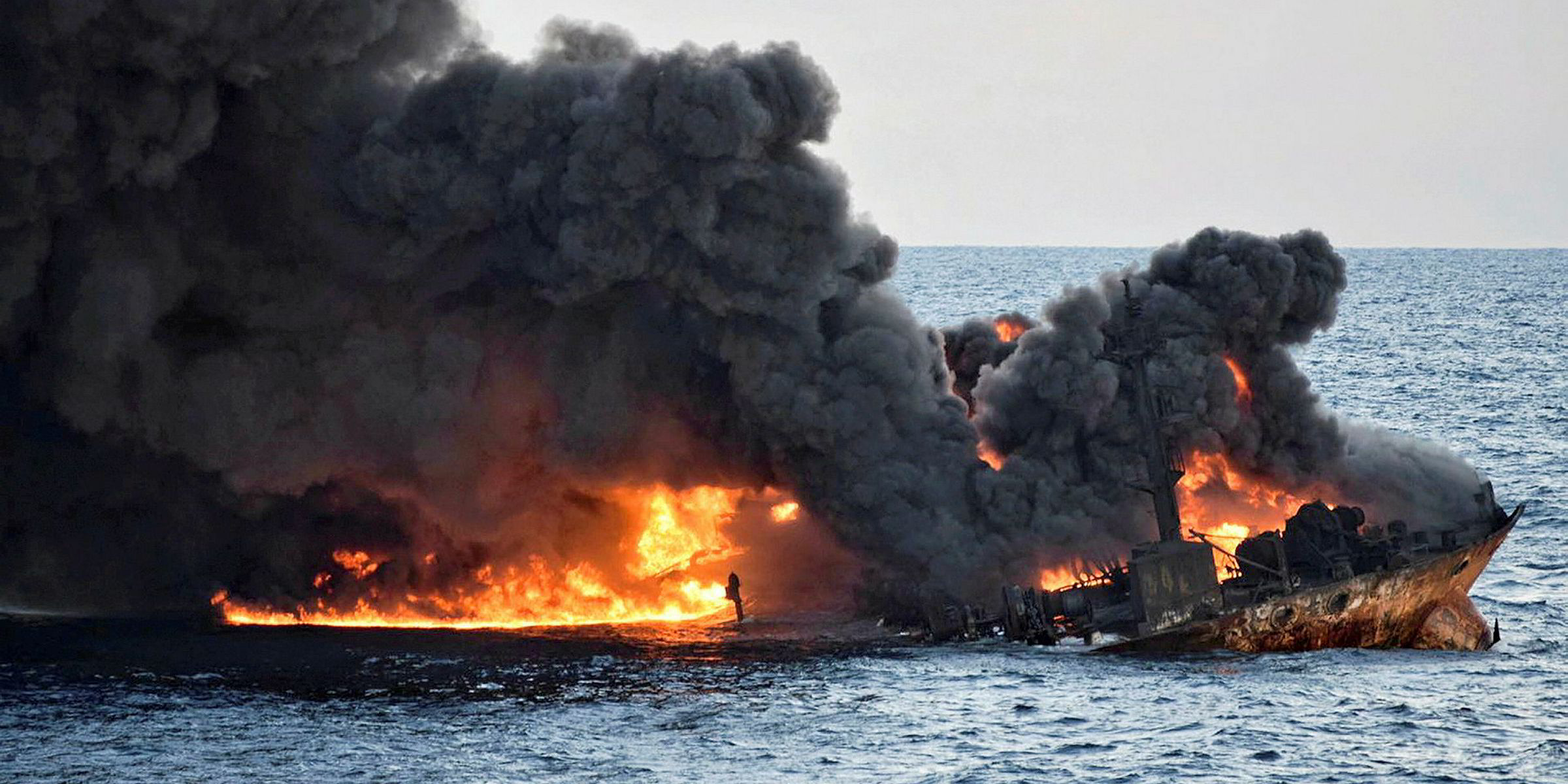Greenpeace claims it is “impossible to estimate” the magnitude of the oil spill from the NITC tanker which sank off China earlier this month.
The Chinese State Oceanic Administration recently said that oil from the 164,000-dwt Sanchi (built 2008) may now cover an area of 332 sq km, much larger than previously reported.
“This is an evolving situation and accurate information about the amounts of oil spilled already and likely to be spilled in the future is not available,” said Paul Johnston, head of Greenpeace International’s science unit.
“It remains almost impossible to estimate the magnitude of the spill and what the potential environmental impacts might subsequently be.
“The authorities must ensure there is continued oversight of the spill and that a thorough and systematic surveillance monitoring programme is put in place to assess its ecological significance.”
The Sanchi collided with the 76,000-dwt bulk carrier CF Crystal (built 2011) 160 miles of the East coast of China on 6 January.
The Panama-registered tanker, which was carrying an estimated 136,000t of condensate, latter sank on 14 January after burning for several days.
Meanwhile, the black boxes from the Sanchi have been opened, the Iranian Students’ News Agency (ISNA) reported.
Officials from China, Iran, and Panama were present when they were opened, Hadi Haqshenas, maritime affairs deputy at Iran’s Ports and Maritime Organisation, was quoted as saying by ISNA.
“Clarifying the ultimate results of the deciphering process takes time and it could take months," Haqshenas said, according to ISNA.
Separately, the maritime authorities of China, Panama, Iran and Hong Kong have signed an agreement to jointly investigate the casualty, according to a statement by China’s Ministry of Transport.
Investigation work will be organised by a joint team composed of representatives of all four signatories to the agreement, the ministry statement said.




